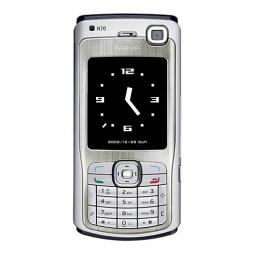camera phones
Posted by AnneryanHeatwole on Oct 25, 2011
Following this weekend's Tunisian elections, the world is looking to the Middle East to see how new democracies are born. But in many countries with emerging democracies, fraud and corruption can taint the credibility of elections, and the public's trust in the fairness and validity of election results. We have long argued that technology - mobile technology in particular - can play a key role in helping to ensure fair and accurate voting processes and results. However, data has been missing to make that point more definitively.
In areas where much of the voting process isn't digitized, using technology can help mitigate vote tampering and incorrect results. Additionally, SMS reports of vote tabulation from polling stations by trained election observers can be an effective way of limiting voting fraud and corruption, and has been used in different elections around the world. In Lebanon's 2009 elections, roughly 2500 volunteer citizen observers reported from a statistically significant number of polling station incidence reports throughout election day. In Nigeria, 2011 Project Swift Count deployed 8000 trained election observers across the country to report on the elections, including election results from polling stations directly, using SMS.
| Tech in Election Monitoring: Fighting Fraud and Corruption, one Picture at a Time data sheet 1931 Views |
| Countries: |
Afghanistan
|
Posted by ccarlon on Oct 13, 2011
Blacknoise: Low-fi Lightweight Steganography in Service of Free Speech data sheet 1024 Views
Abstract:
Censorship of communications is a widespread, current practice in various countries with repressive governments in order to prevent or restrict speech; political speech in particular. In many cases state-run telecommunications agencies including those providing internet and phone service, actively filter content or disconnect users in defense of incumbents in the face of widespread criticism by citizens.
In this paper I present Blacknoise, a system which uses commodity low-cost mobile telephones equipped with cameras, and takes advantage of their lowfidelity, noisy sensors in order to enable embedding of arbitrary text payloads into the images they produce. These images can then be disseminated via MMS, Bluetooth, or posting on the Internet, without requiring a separate digital camera or computer to perform processing.
Posted by ccarlon on Oct 04, 2011
An Exploratory Study on the Use of Camera Phones and Pico Projectors in Rural India data sheet 1936 Views
Author:
Mathur, Akhil, Divya Ramachandran, Edward Cutrell, and Ravin Balakrishnan.
Abstract:
We explore the potential of using camera phones and pico projectors in rapid creation and presentation of digital content in a development context. A camera phone based content authoring application was designed and deployed with three different user populations in the domains of classroom education and health care.
Our findings show that despite the variations in education levels, cultural background, and technology exposure, users successfully created and presented different forms of digital content using the camera phone and pico projector.
Posted by AnneryanHeatwole on Aug 23, 2010
Today's Mobile Minute brings you coverage on the Hearst magazine empire's new focus on mobile apps, what can go wrong on your mobile website and how to spot it, a camera phone-to-email project in India, checking African drugs with SMS, and a new speed texting record.

